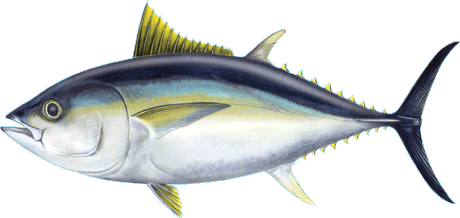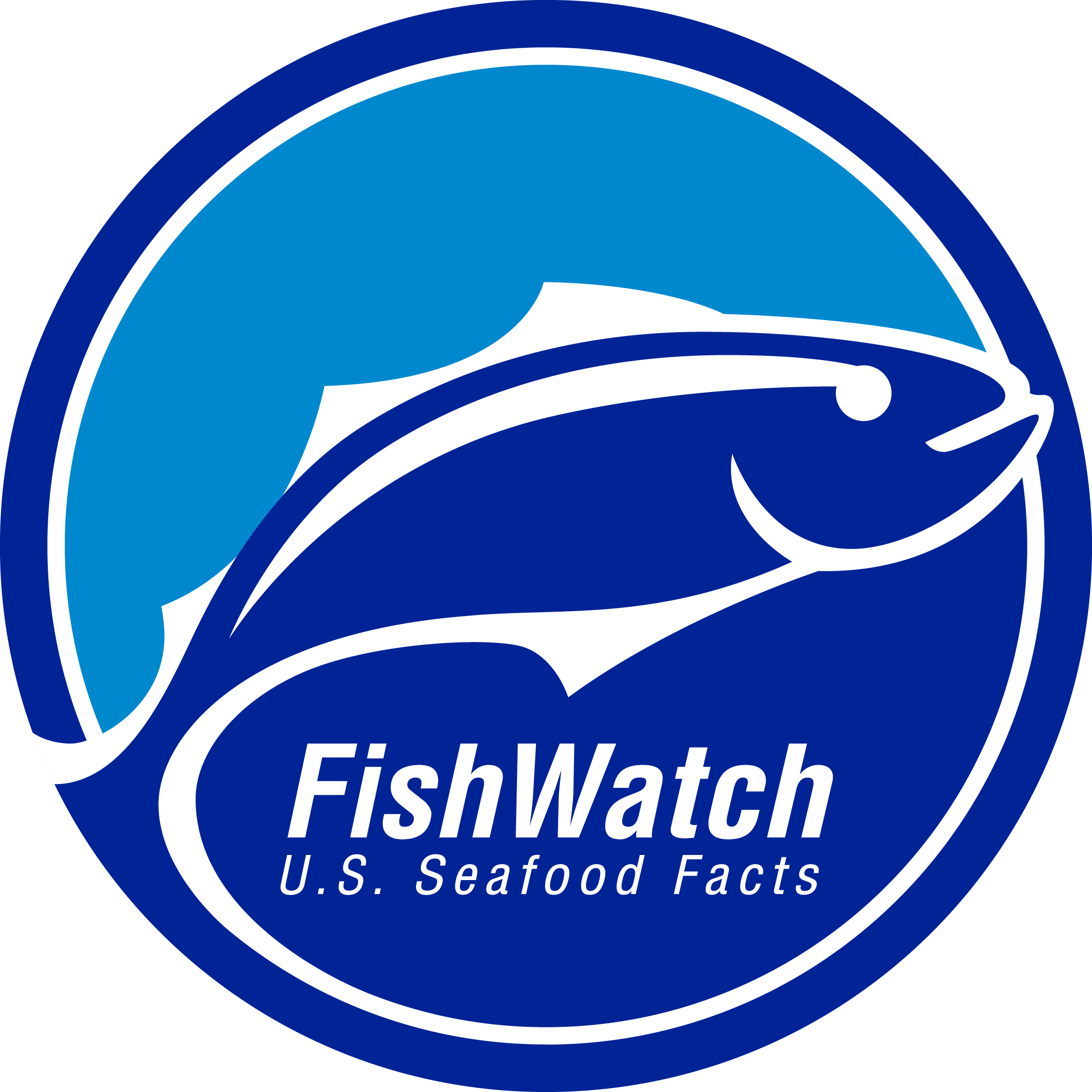
BIGEYE TUNA (AHI)
Scientific Name: Thunnus obesus
Hawaiian Name: `Ahi
Japanese Name: Mebachi
In Hawaii, “Ahi” refers to two species, the Bigeye Tuna and the Yellowfin Tuna. Similar in general appearance, the Bigeye may be recognized by its plump body, its larger head and its unusually large eyes.
Good quality Bigeye meat has a reddish-pinkish flesh color. Caught in deeper, cooler water, it typically has a higher fat content than Yellowfin and is preferred by sashimi lovers. For less discriminating consumers, the two species are interchangeable.
Fish landed in Hawaii range from 20 to over 200 pounds. Smaller fish are usually caught around fish aggregation buoys and over seamounts. The large fish are usually caught in deep open ocean waters. They are preferred for their typically higher fat content and greater yields.
Virtually all Bigeye Tuna is sold fresh.
FISHING METHOD
All Hawaii bigeye tuna are line-caught. Most of Hawaii’s bigeye tuna are caught by deep-set longline fishing gear off shore of Hawaii. The remainder of Hawaii landings come from handliners and trollers. Fresh Hawaii bigeye tuna are not caught by purse seine nets as they are in fisheries that supply tuna canneries.
SEASONALITY
Peak landings occur from October through April.
PREPARATION NOTES
Texture: Firm
Flavor: Mild
Suggested Preparations: Grill, Broil, Sauté, Raw
One of the preferred species for the preparation for sashimi. With a high fat content, it is also among the most desirable species for grilling.
HEALTH & NUTRITION
Hawaii Bigeye Tuna is an excellent source of healthy, extra lean protein. It is also low in saturated fat and low in sodium. It is rich in niacin, vitamin B6, vitamin B12, selenium and phosphorus. Hawaii Bigeye Tuna is a good source of iodine and magnesium. Hawaii Bigeye Tuna also provides about 500 mg of omega-3’s (DHA and EPA) per 4 ounce serving of fresh fish. Click here for nutritional labels and claims.
For more information about this species, click here to download a two-page description.
SUSTAINABILITY
Current status: Hawaii bigeye tuna are being fished sustainably. Overfishing has been eliminated in the Hawaii fishery due to strict enforcement of bigeye catch quota. Overfishing is occurring in international fishery in the western and central Pacific. Population is not overfished.

Visit our Sustainability page and the Pacific Bigeye Tuna page at NOAA’s FishWatch.gov for more information.
The FishWatch™ emblem is a registered trademark of the National Oceanic and Atmospheric Administration and is used with permission.

